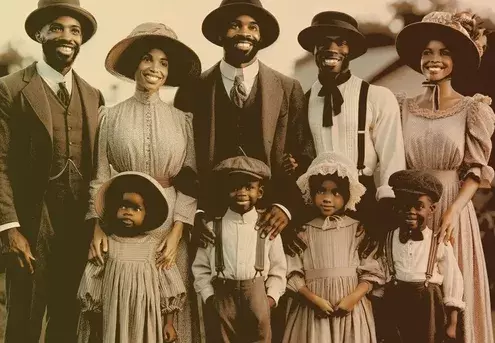On this day, in 1959, playwright and author Lorraine Hansberry produced her famous work, “A Raisin in the Sun”. This would become the first play produced on Broadway by an African-American woman. This work would follow the Younger family as they try to escape poverty after receiving a $10,000 insurance check. This play would become famous for tackling blackness in America and the inherent racism within the system and culture that has left countless in poverty.
Significance of Raisin in the Sun Play
After the patriarch of the Younger family, leaves a massive insurance check worth $10,000. This presents an opportunity to improve their lives and finally escape poverty. Each family member has different ideas for how to use this money. This reflects their individual struggles, ideals, and principles.
The matriarch, Lena Younger, wants to buy a house to fulfill her late husband’s dream and provide a better future for her family. Her son, Walter Lee, aspires to invest in a liquor store to improve his economic status and assert his identity as a man. Meanwhile, Walter’s sister, Beneatha, dreams of becoming a doctor and breaking free from traditional gender roles and expectations.
But aside from their plans, they must also contend with the systemic racism plaguing US society at this time. From discrimination on an individual level to societal and cultural expectations. Lena must deal with the decimation of their neighbors who do not want a black family moving into their home, Walter must manage the responsibility of providing for his family, and Beneatha must face the racial and gender roles expected of her.
When it came out, this play was one of the first works to feature a primarily black cast and focused on the struggles of African Americans in a traditionally white industry. This showcased their struggles by challenging stereotypes and promoting empathy and understanding.
A Raisin in the Sun provides this poignant commentary on race relations, economic inequality, and the pursuit of the American Dream by showing it in the context of an African-American family. While the American Dream has long been touted as one of the biggest draws to the US, non-white people encounter issues such as housing discrimination, cultural identity, and generational conflict.
This play also came at an important time since it was produced during the Civil Rights conflict when the African-American community seriously challenged racial inequality within the US.
The name of the play comes from an important question raised by Langston Hughes in his poem, Harlem.
“What happens to a dream deferred? Does it dry up like a raisin in the sun?”
– Langston Hughes, Poet.
Adaptation Showcasing the Popularity

Over the years, A Raisin in the Sun has been adapted into various forms, including a musical and TV film, showcasing its enduring popularity and relevance. Each adaptation adds a new dimension to the narrative, keeping the spirit of Hansberry’s original work alive for new audiences to appreciate.
The Younger family’s raisin in the sun journey is one of resilience in the face of adversity. Their ability to maintain hope and unity despite their struggles serves as a powerful testament to the human spirit.
Despite the obstacles they face, each family member’s unwavering pursuit of their dreams highlights the enduring power of hope and aspiration.
The play challenges traditional gender roles through the characters of Mama and Beneatha. Their strength, independence, and ambition offer a feminist perspective on the roles of women in society.
The intersection of race and gender in the experiences of the female characters underscores the complexity of their struggles and the need for an inclusive approach to social justice.
Techniques Used by Lorraine Hansberry
Realism and Dialogue: Hansberry’s use of realistic dialogue and character development creates an authentic portrayal of the Younger family’s raisin in the sun experiences, making their struggles relatable and impactful.
Symbolism and Foreshadowing: The play’s use of symbolism, such as the plant and the insurance check, and foreshadowing adds depth to the narrative, enhancing its emotional and thematic resonance.
Impact of Socio-Economic Status on Dreams and Ambitions
The Younger family’s raisin in the sun economic struggles highlight the impact of poverty on their dreams and ambitions. The play questions the fairness of a system that limits opportunities based on socio-economic status.
The characters’ differing views on how to achieve social mobility reveal the complexities of class dynamics within the African-American community.
In conclusion, A Raisin in the Sun stands as a timeless masterpiece that continues to inspire and provoke thought on important social issues. Through its compelling characters and powerful themes, the play remains a poignant reflection of the challenges faced by marginalized communities in society.
This line is the perfect encapsulation of the issues faced by black families who aspire to be more. How the system that’s supposed to help them works to crush their dreams.
If you want to create vintage letters that might one day get produced on Broadway, our Vintage Letter platform can let you create some beautiful letters here.
